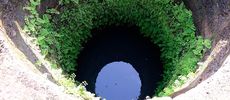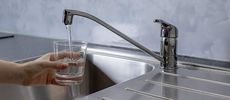Wildfire Impact on Water Quality Challenges Los Angeles Utilities


As the Palisades and Eaton wildfires burned in early January 2025, water utilities across Los Angeles County issued advisories declaring drinking water unsafe until testing proved otherwise. These early warnings, issued on January 8, were precautionary—wildfire impact on water quality had not been determined yet.
But by late February, that changed. Water tested from distribution systems in the burn scars of each wildfire contained the carcinogen benzene. State regulators recommended continuing advisories, which ranged from "Boil water for drinking and cooking" to "Do not use for any purpose," depending on the test results.
Here's a closer look at how urban wildfires impact drinking water quality, the health risks toxic chemicals introduce, and the critical role of water testing for public safety.
Urban Wildfires Contaminate Distribution Systems
The Los Angeles wildfires destroyed more than 16,000 structures, along with water, sewer, and power infrastructure. Even in areas with minimal damage—and especially where it's extensive—it can take weeks to months of testing to determine wildfire impact on water quality and possibly years of rebuilding before water is declared safe for drinking.
Volatile organic compound (VOC) contamination of urban drinking water systems after wildfires was first noted in 2017, according to the National Institutes of Health. The first reports came from tests after the Tubbs Fire in Santa Rosa, California. The VOCs were not found at water sources or treatment plants, making it clear the contaminants were introduced within the distribution system.
Water pressure in drinking water systems normally prevents airborne contaminants from entering. But in extreme cases, firefighters create water demands that systems aren't designed to meet. Open fire hydrants and broken pipes spew water, and loss of power prevents pumps from replenishing it fast enough. Low water and low pressure make distribution systems vulnerable to contamination.
"Ash, smoke, soot, other debris, and gases get sucked into the water piping network," said Andrew Whelton, a Purdue University professor, to the Associated Press. The hazard can be higher than in forest and grassland wildfires because flames in cities and towns consume toxic materials like vehicles, propane tanks, plastics, paint, and insulation.
Heat damage to components like plastic pipes, meters, and tanks can also release toxic chemicals like benzene into water systems, as researchers reported in Environmental Science. The combination of harmful chemicals washing out of the plastic and also sticking to it creates the possibility of recontamination until all chemicals are flushed out, jeopardizing public health and safety for months.
Toxic Chemicals Create Severe Health Risks
The chemicals of greatest concern after the L.A. wildfires include various VOCs. A recent analysis suggested that burn severity, measured as the density of damaged structures, correlated with the probability that VOC contamination exceeds maximum contaminant levels (MCLs) in drinking water.
Benzene, a known carcinogen, is a lightweight VOC that quickly turns to vapor. Risks range from temporary nausea, headaches, and rashes to cancer, blood disorders, and reproductive problems.
California policy uses benzene as a benchmark for contamination as a whole, but Whelton emphasized that other VOCs have been found in water systems even when benzene was not present. That makes testing for a full range of VOCs and the heavier semi-VOCs vital, according to Whelton.
Lab tests after the wildfires in L.A. County, for example, detected methylene chloride, a VOC and carcinogen found in materials like plastic, adhesives, paints and paint thinners, cleaning products, and gasoline.
Although advisories sometimes allow residents to use water to wash their hands or shower, scientists warn that benzene can be absorbed through direct contact with the skin. That's generally less hazardous than inhalation or ingestion. However, Whelton said no chemical or mathematical modeling or exposure assessments have determined what household water uses are safe. That makes "Do not use" orders the most protective for residents.
Utility Water Testing Remains Critical
Utilities in Los Angeles County continue to assess wildfire impacts, flush and replace contaminated pipes, test for contaminants, and revise advisories. Anxious residents may want to pursue water testing in their homes, but many publicly available tests can't detect fire-related contamination. After certified labs have tested water and utilities have shared the chemicals detected with the public, owners may consider assessing their systems, if plumbing was damaged or contaminated water flowed through it.
Recent disasters demonstrate that U.S. cities and its water systems aren't resilient to wildfires. Yet wildfires are becoming more frequent and severe. For now, that puts the onus on local health departments, utilities, and water test labs to keep communities safe.






